My first day entry for the AtoZ Challenge. So here it is A for Angkor Temple Complex.
Last year March, I went on a south east Asia Trip and Cambodia was one of the countries. My travelogues are still lying in my draft, yet to be completed or published. So to get myself to blog more frequently I decide to take this challenge. I am hoping to finish it successfully.
To read on the ‘4 country in 11 days’ trip plan, click here.
Ok. Let me start by breaking a myth and tell few interesting trivias along the way.
Number one Myth: Unlike the wide belief, Angkor Wat is not the entire complex but just the center temple, and the first in the capital city of the Khmer Empire. The entire campus of the monuments including Angkor Thom, Ta Prohm,etc is called the Angkor Complex. Unlike our Kings who built in different towns even though they belonged to the same dynasty, the Kings of the Khmer built their state temples and monuments in and around the Angkor to mark their rule; thus Angkor Complex becoming the biggest Hindu Temple monument.
The journey: Couple of friends and I started from the city to Angkor complex at 5 30am, for the Angkor Sunrise. We took a one day Pass which costs 20$, while you do have an option to take for three days or a week, 40$ and 60$ respectively. Angkor is open from morning 5 to evening 6. So, you can enjoy the sunset and get back to the city.
Trivia: Angkor means the ‘Capital City’, the Khmer Kingdom was established with Angkor as its Capital, and Wat means ‘Temple’, So the first ‘Capital Temple’ was built by Suryavarman as a supposedly dedication to himself as ‘God-King’, which I personally think could be a false assumptions.
On the way to Angkor, lake view. The water system of the ancient city of Angkor still remains a puzzle to many. The reasons range from humongous reservoirs and lakes which had the capacity to support a population of 1 million, which brings to the question did that many live already there the during the 12-19 century??; The water system did not have an outlet, bringing to question was it a form of protection or irrigation? Almost all of the monuments have a water body around them, doesnt that remind our forts back home, where the water body were filled with crocodiles to prevent invasion and attack, so the logic I presume was for protection.
The best way to commute is to hire a tuk-tuk for the entire day at 30-35$, which can easily fit in 4 people. And most of the drivers, guide you around the place and give you a dozen drinking bottle, trust me even that wont be enough. Get ready to get dehydrated, especially during the summer the temperature can be at its peak and the climbing of those steep steps, long corridors and hoping from one temple to another can drain you out, we might have drank a liter of water minimum every two hours. We recharged ourselves with loads of water, bananas and coconut water which are all available inside the complex.
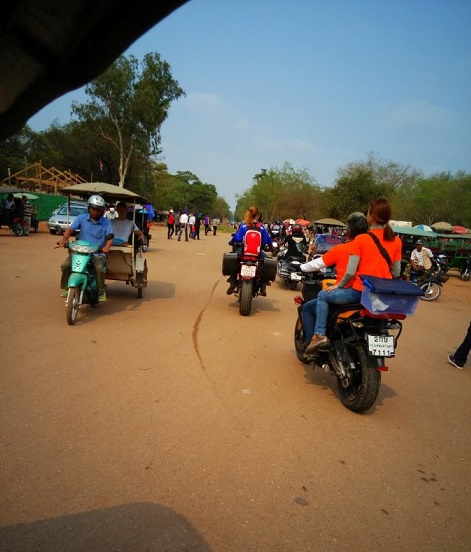
The first stop is the Angkor Wat for the sunrise. Once we reached, we found a nice place and settled in to admire the beauty. It was quite shocking to see the crowd already set in for the sunrise.
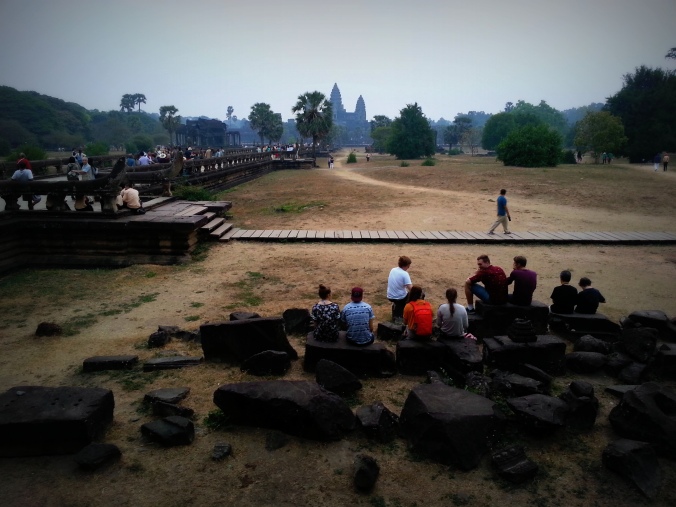
The SUNRISE!!
More Shots!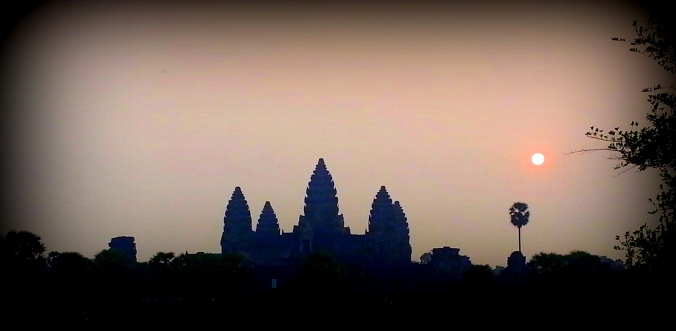
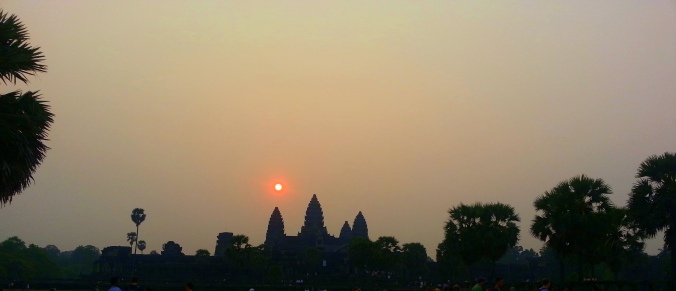
Walking through the Angkor Wat, a temple/mausoleum built by Suryavarman in the 12 Century for Lord Vishnu, a practice different from that of the Kings of that century and Dynasty, wherein most were for Lord Shiva
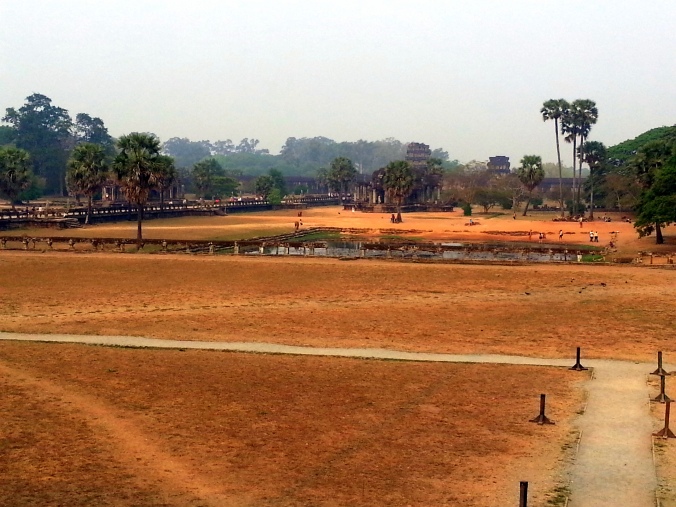
One of the Hindu temples with longest corridors.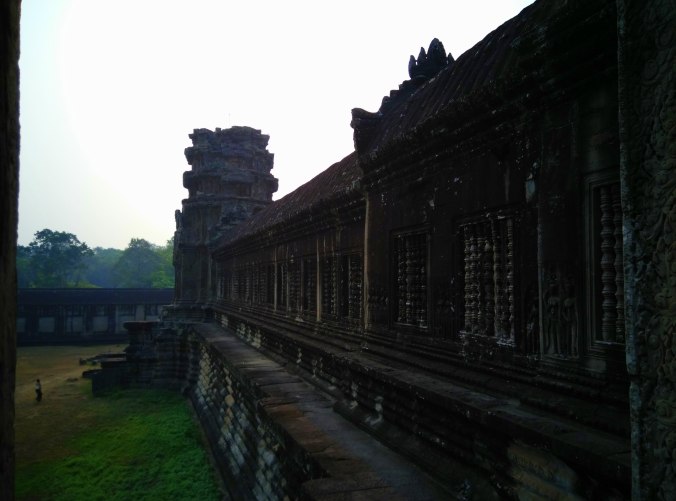
The walls on the East and West are built to resemble a mirror image of each other.
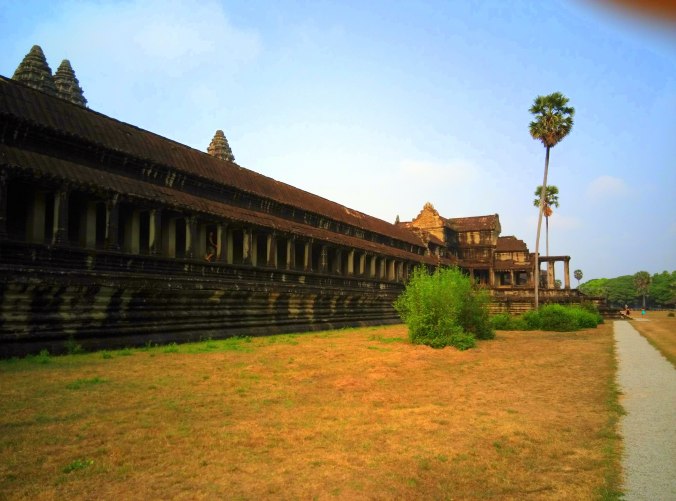
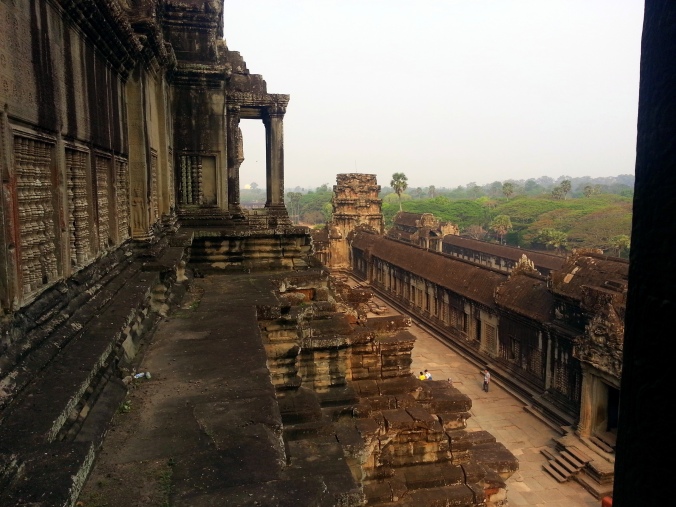
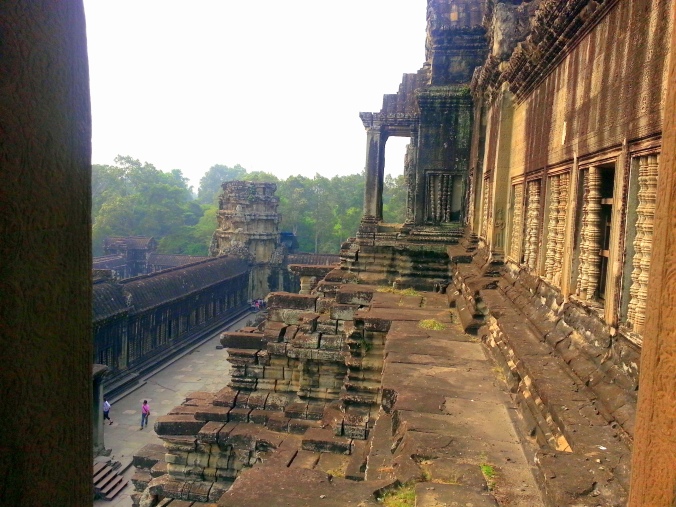
The temple Shrine which once had a Lingam replaced by Buddha after Jayavarman.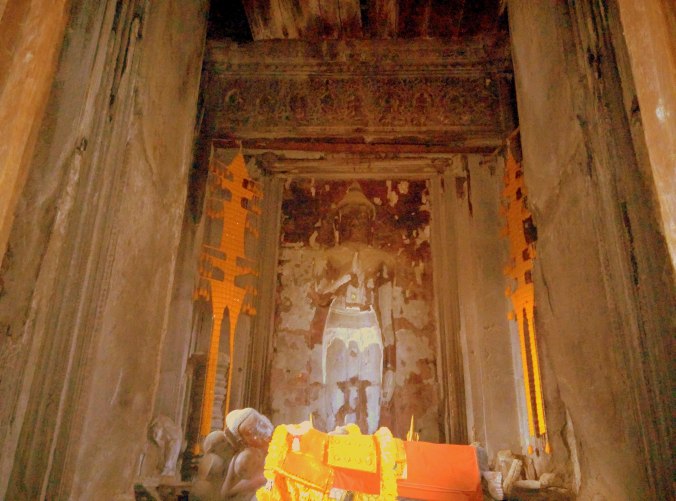
Thousands of Buddha statues lie faceless, such were the extent of loot. It was and still believed a head of a Buddha is lucky for the House.
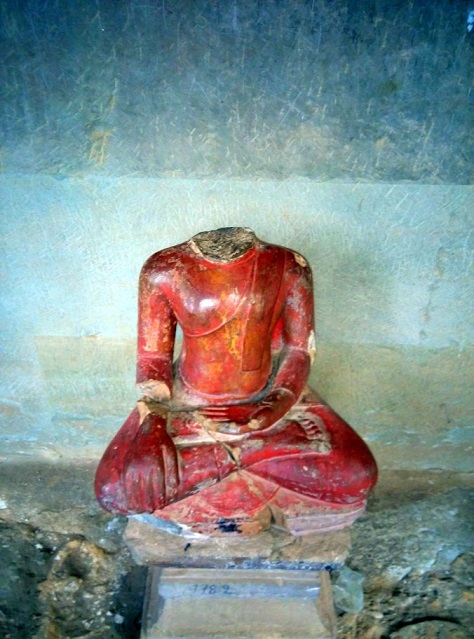
The side wing of the Angkor Wat
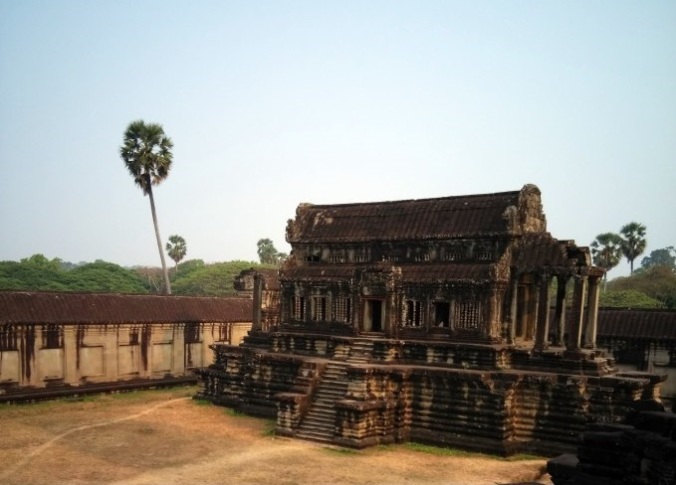
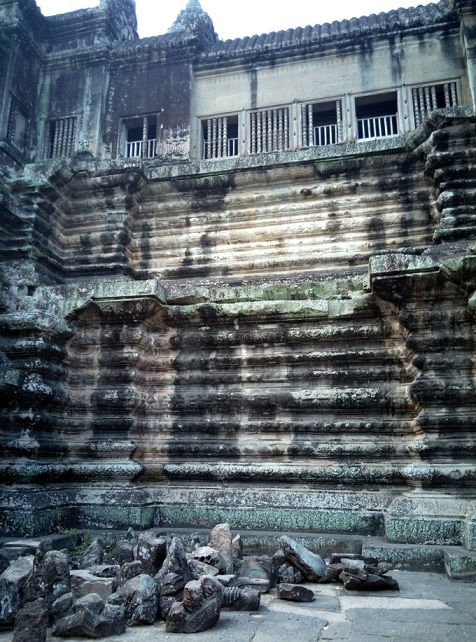
The ornamentation of the corridors are same like that of our temples and our tamil houses. These walls once had mirrors adorned on them!.
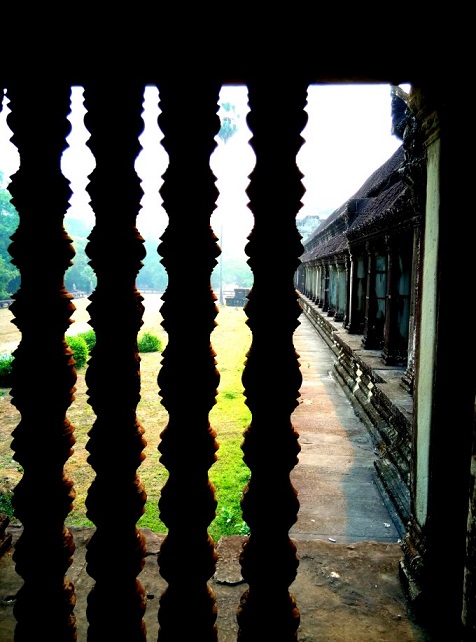
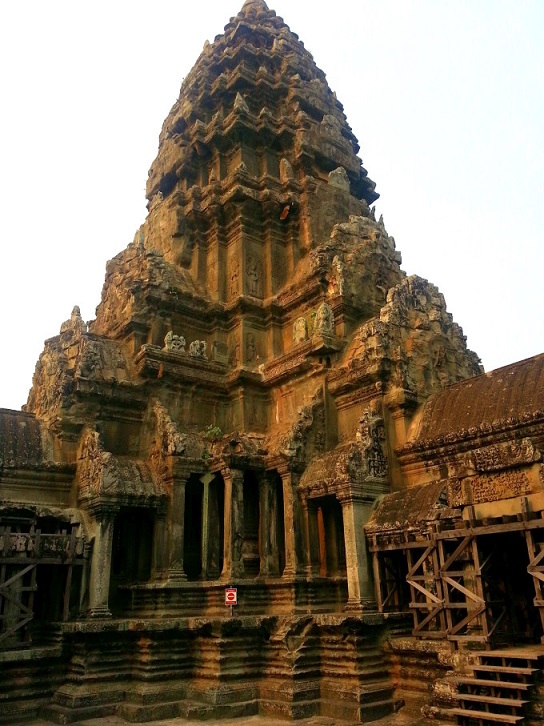
Just like our Hindu temples almost every entrance to a monument had inscriptions, usually that of the guarding demi-God,for the Supreme God aboding the Shrine.
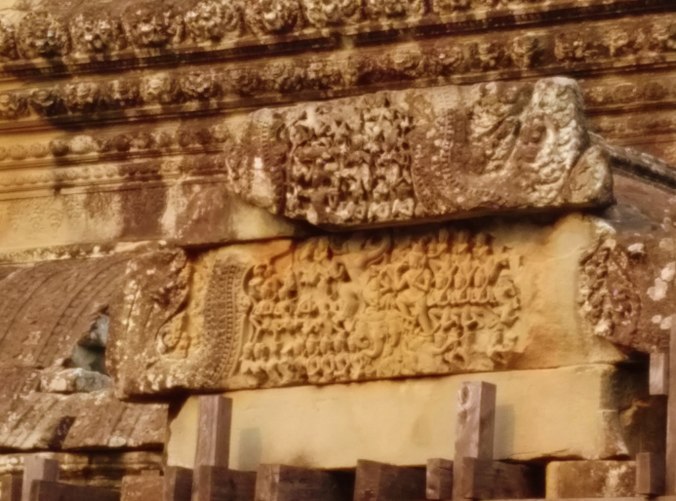
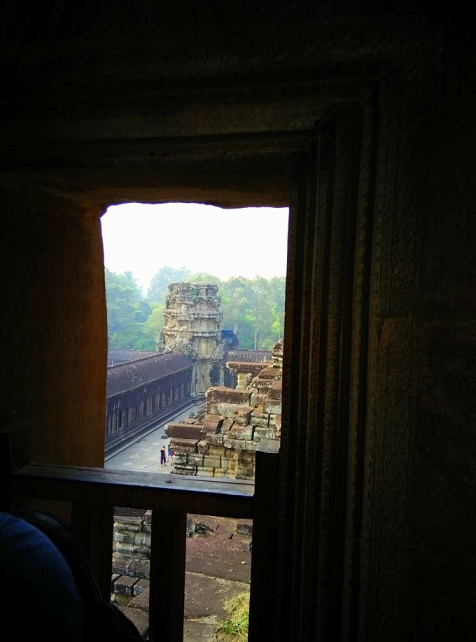
The End of the Tail of the Naga. The temple has a construction of a huge Naga around the premise, a symbol of the protector.
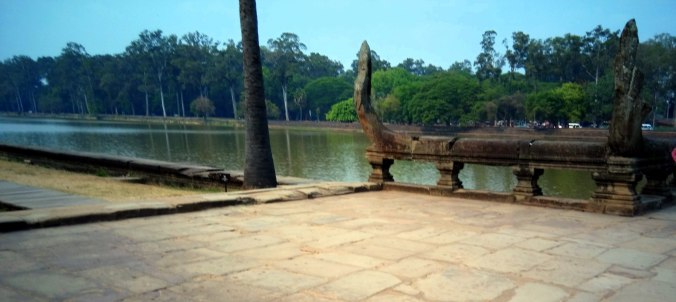
Angkor Wat is adorned by beautiful carvings of the Apsaras- The celestial nymphs. The sculptures of the Apsaras supposedly have more than 35 different hairstyles.
Angkor Thom.
Angkor Thom became the state City of the Khmer after the Successor of Suryavarman, Jayavarman VII, considered the most successful ruler of the Khmer dynasty.
To the Angkor Thom, you are welcomed by the Gate of Angkor Thom and the State temple of Jayavarman, Bayon.
Gate of the Angkor Thom. Typically, it is a wall that runs through the entire premise of the Angkor Thom.
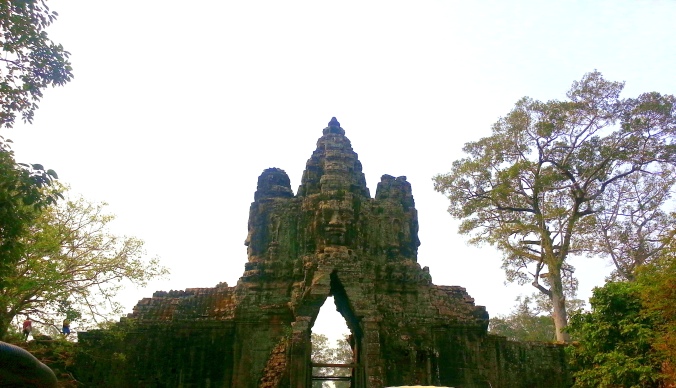
In the entrance of the gate is the huge sculpture depicting the Kurukshetra War, the churning of the Amirtham by the Devas and the Rakshasas.
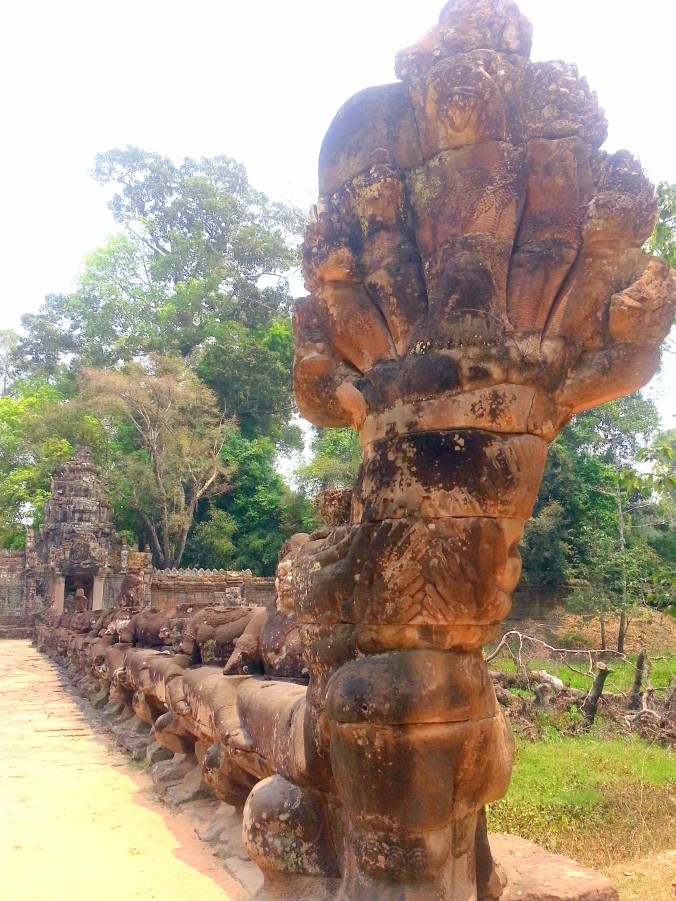
Bayon
The monument of the 216 gigantic faces of happy, serene and ever-smiling Buddhas, constructed by Jayavarman II.
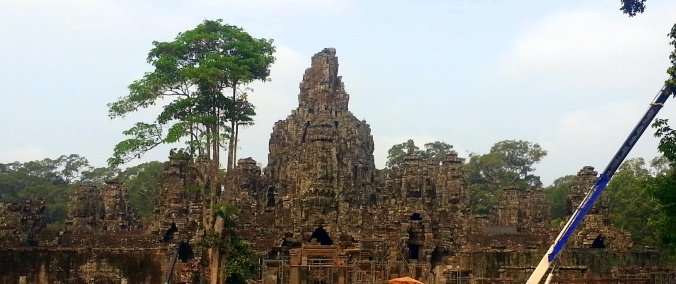
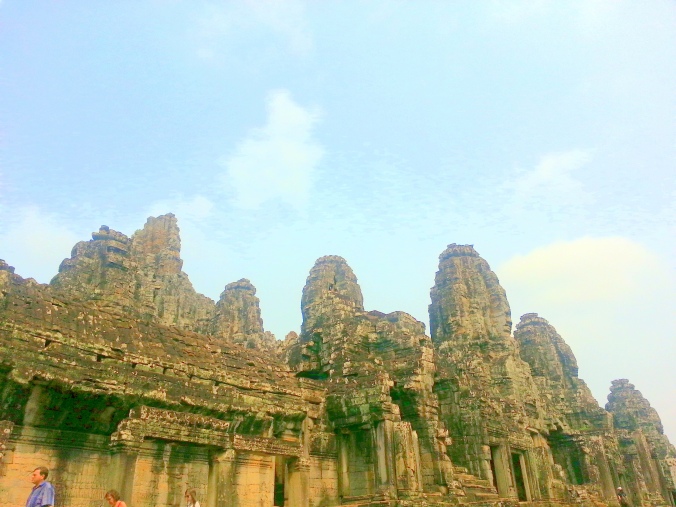
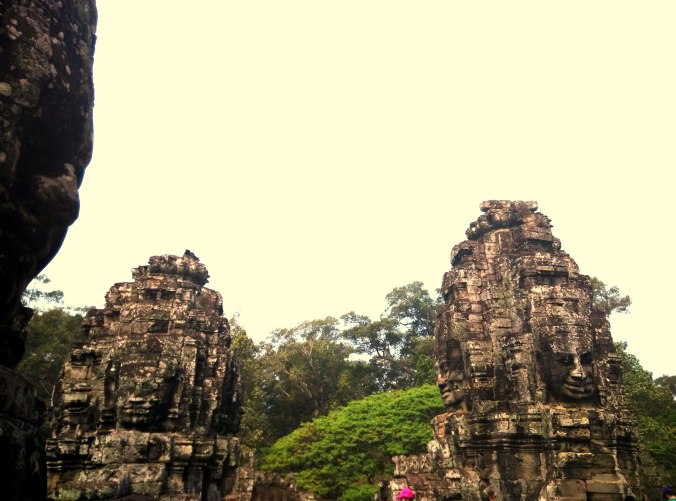
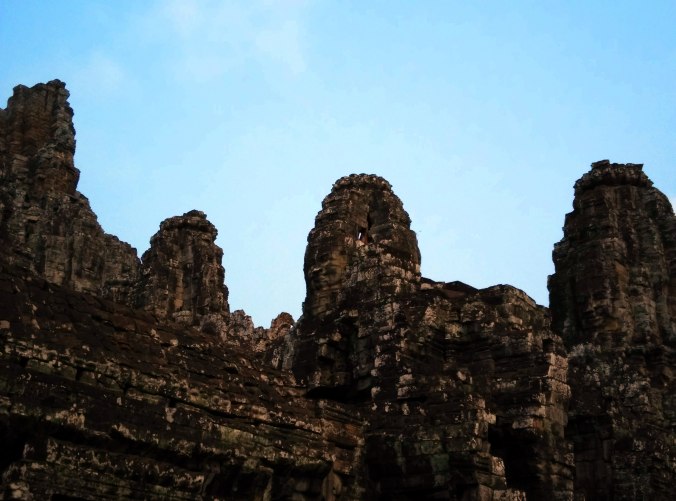
The many faces
Bas Relief in the Bayon, depicting war of the Khmer Empire.
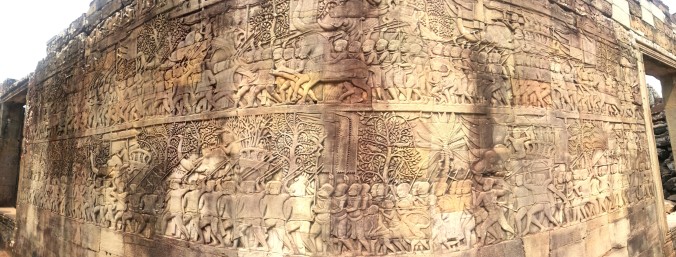
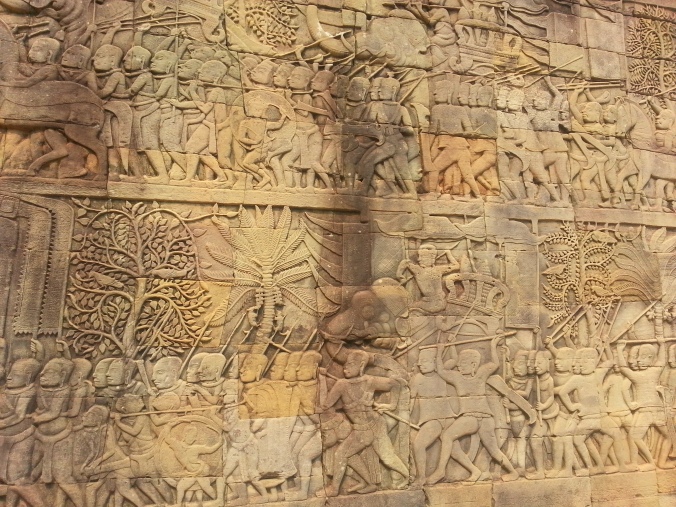
The Bayon is typically of three stages of construction, the circular foundation, rectangular walls and the Buddha faces placed on top.
The interiors of the temple.
Bayon though built as a dedication to Buddhism, was later modified as per Hindu tradition.
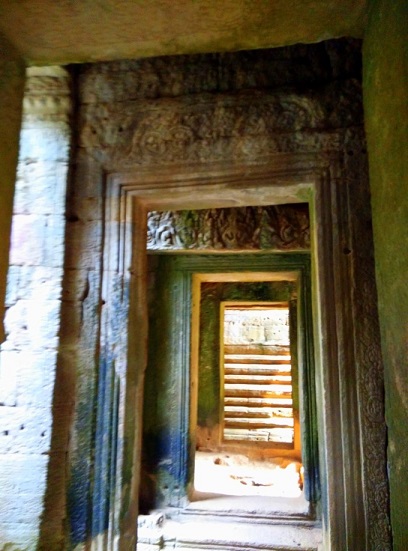
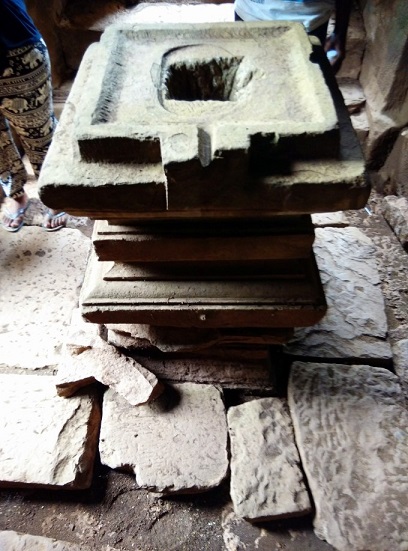
This was an intriguing pillar in Bayon. The structure looked strong, but shook easily just on slight pressure, it also had a gap between itself and the floor. Also, when I rested my ears on the pillar, there was this beautiful sound of water flowing.
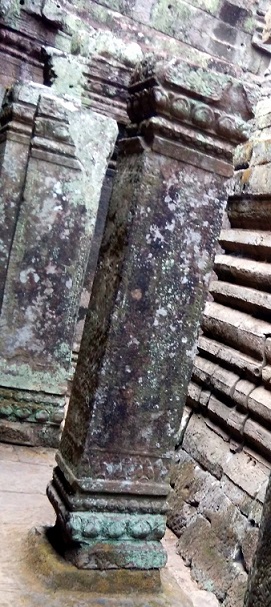
The roofs’ had a natural sunlight entry. Not only that, any sign of an agni gundam(Vedi) there was this outlet.
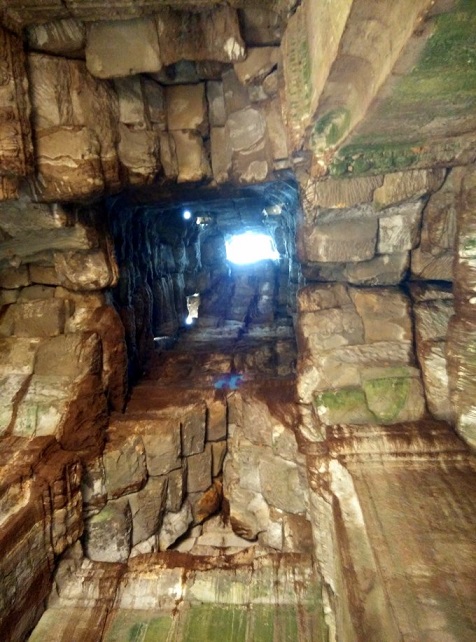
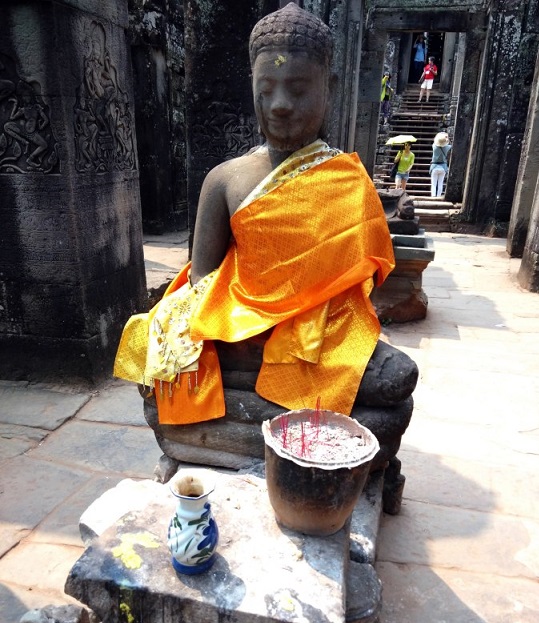
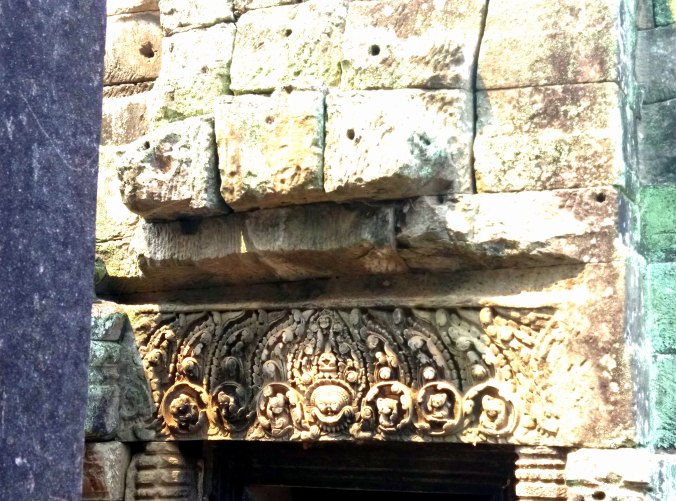
Lintel of the Bayon, A Buddha temple with Hindu inscriptions? I am sure this was built after Jayavarman VII
Mind-blowing inscriptions of the civilisation and cultural practices of the Khmer Empire.
Angor Thom. The once thrived and feared upon and the most safe-guarded cities of the Khmer.
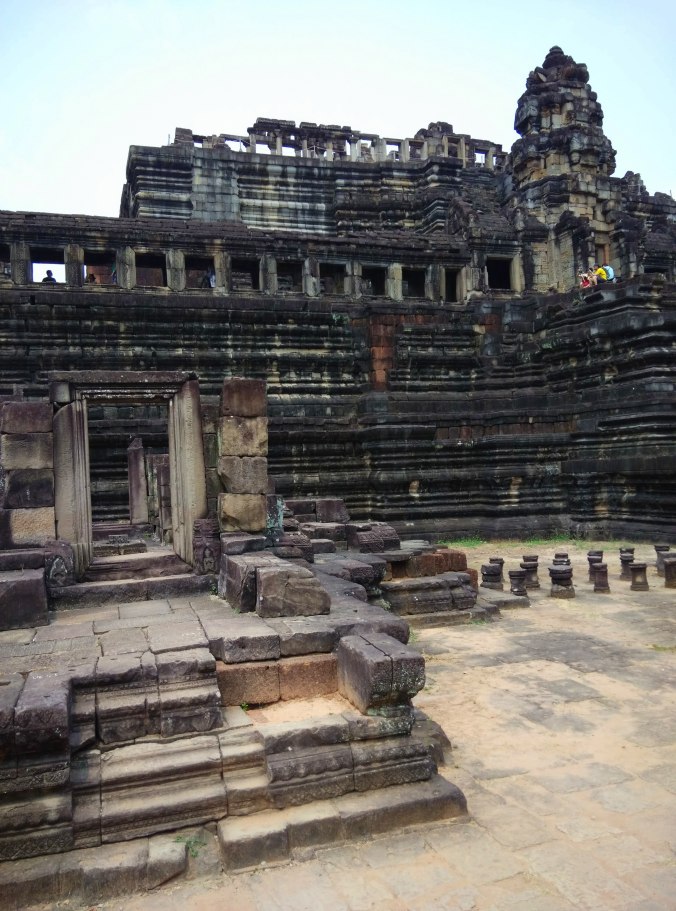
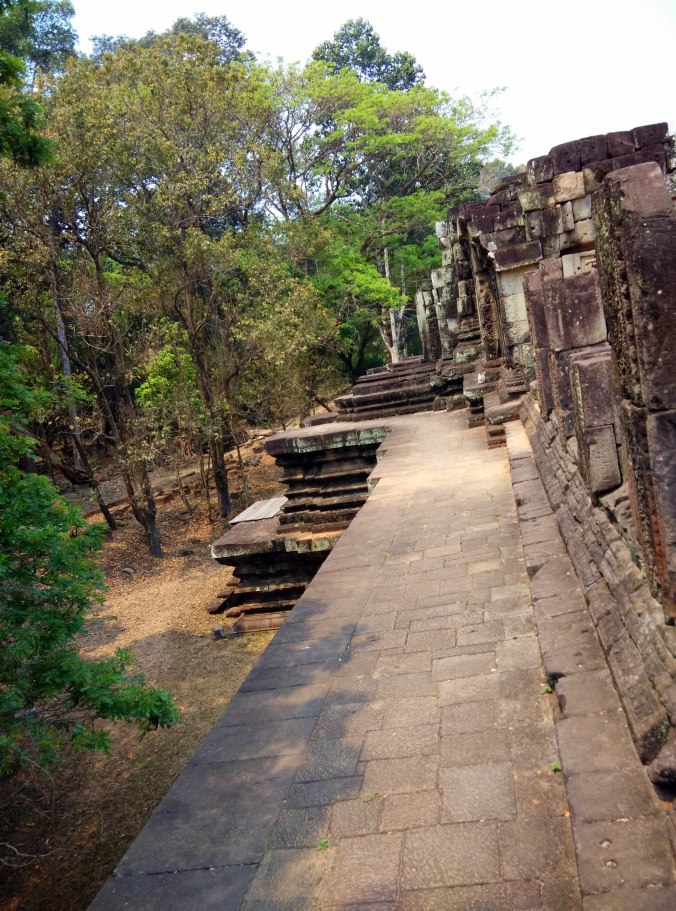
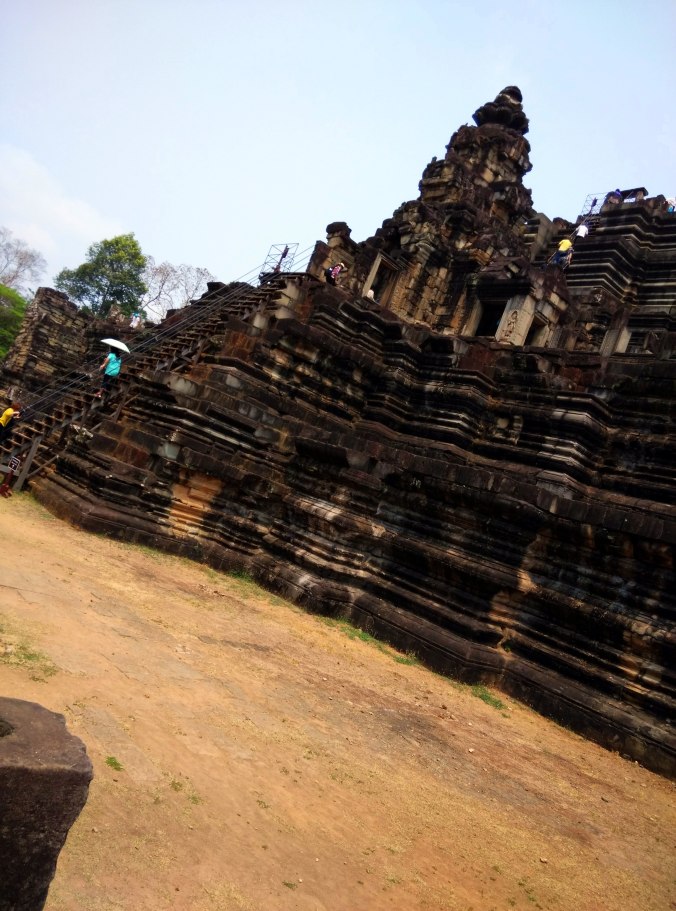
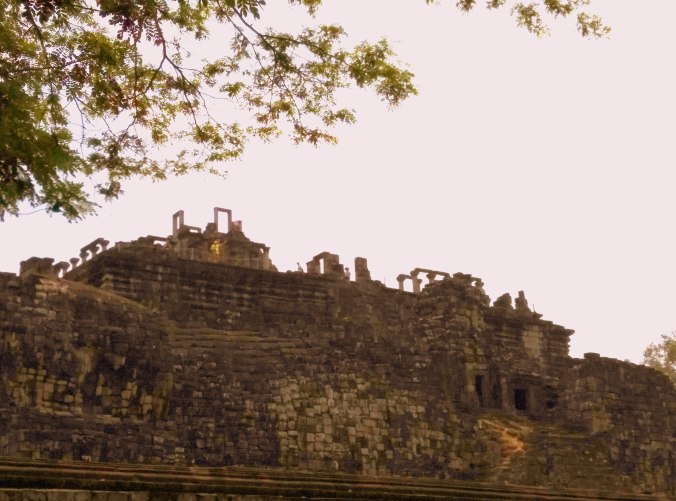
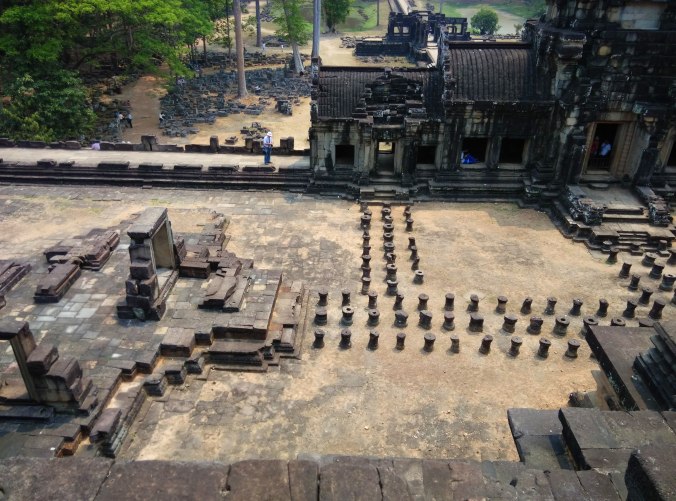
The Elephant Terrace was a wall for the city of Angkor Thom. The Terrace was position of supervision for Jayavarman when his troops returned victorious.
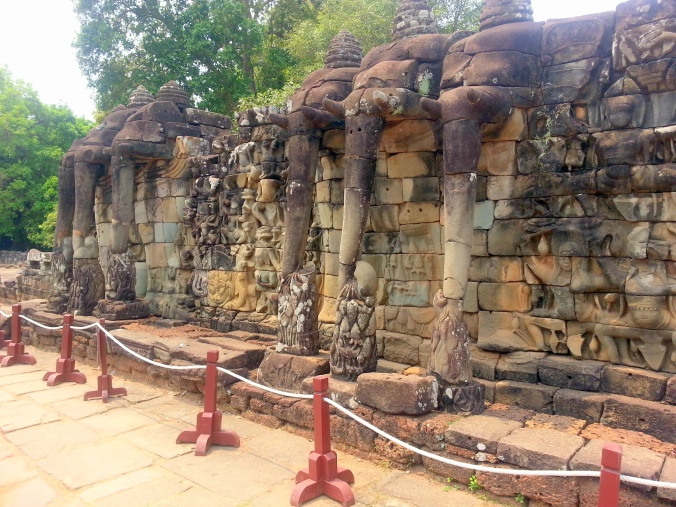
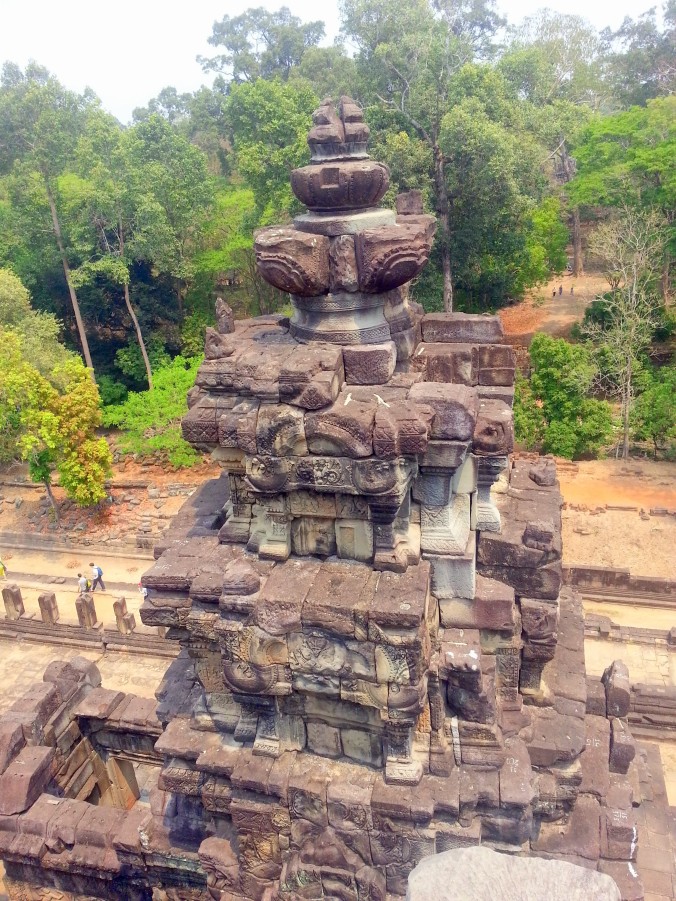
The Leper King Terrace
A monument dedicated to one of the Kings of Khmer who had leprosy.
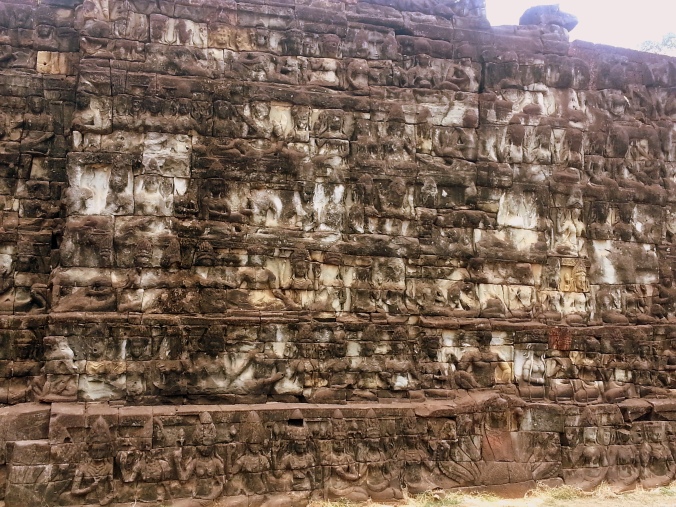
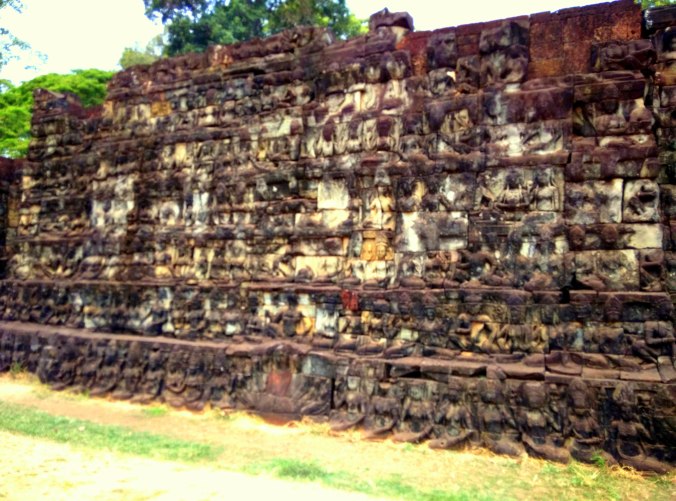
Baphuon
The state temple in dedication to Lord Shiva by the Khmer King Jayavarman VIII, who believed in Hinduism and converted many of the monuments back to Hindu traditions from Buddhism. However, in the 15th century it was again converted to a Buddhist temple.
If you had noticed, this very act of the monuments being balled between the religious believes of the Hindu and Buddhist Kings is a great history in itself to read and have a little laugh.
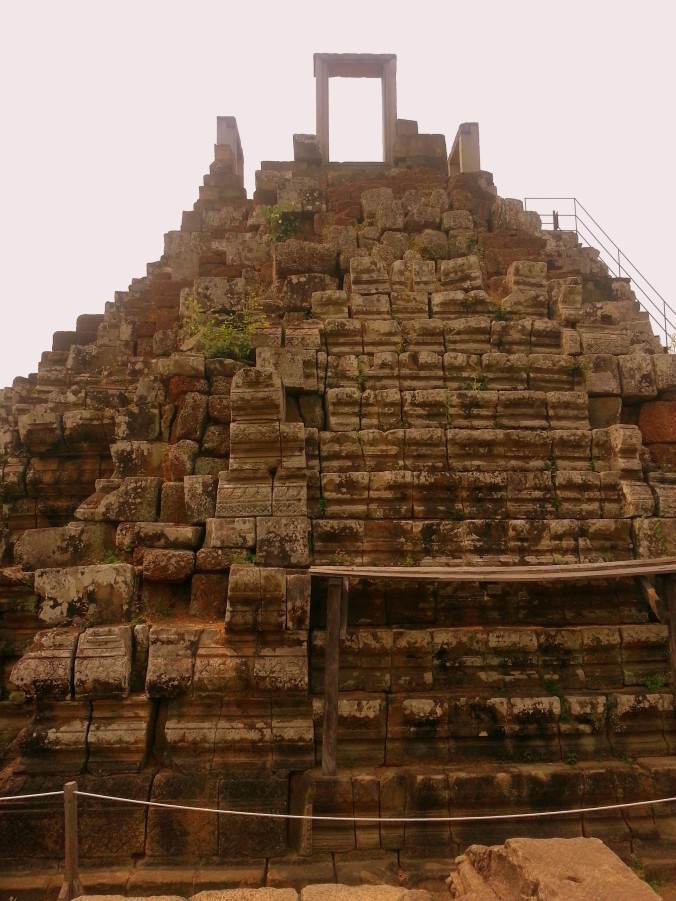
The steps of the monuments are really steep, the reason for the Kings to do so was that they were believed to be supreme and thus Supreme shouldn’t be easily accessible.
Ta Som
A less famous temple dedicated by King Jayavarman VII to his father, the temple is known for its Buddha face as the Gopuram and the strangler fig entrance.
Pre Rup
The state temple of the King Rajendravarman dedicated to Lord Shiva. The temple is a depiction of the funeral system in Cambodia, where the funeral happens in the temple, and the ash is rotated in different directions as the rituals are done.
Preah Khan
Another temple built by Jayavarman in dedication to his father. The place is where Jayavarman won his battle against an invasion by the Chams Clan.
Neak Pean
One of the monuments of the Angkor that intrigued me. The construction has a Buddha temple in the center of a man-made Pond. And the temple is abode two entwined serpents.
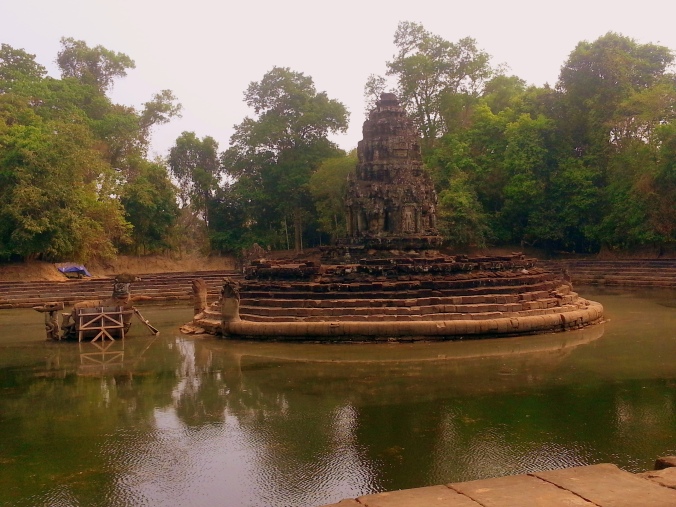
Neak Pean was originally designed for medical purposes (the ancients believed that going into these pools would balance the elements in the bather, thus curing disease); it is one of the many hospitals that Jayavarman VII built. It is based on the ancient Hindu belief of balance. Four connected pools represent Water, Earth, Fire and Wind. Each is connected to the central water source, the main tank, by a stone conduit “presided over by one of Four Great Animals (maha ajaneya pasu) namely Elephant, Bull, Horse, and Lion, corresponding to the north, east, south, and west quarters….The stone conduits in the little pavilions are fashioned to represent the heads of the Four Great Animals…the only exception being that on the east, which represents a human head instead of a bull’s.” Originally, four sculptures stood on the floor of the lake. The only remaining statue is that of the horse Balaha, a form of the bodhisattva Avalokitesvara, saving sailors from the ogresses of Tamradvipa. The temple on the lake was originally dedicated to Avalokitesvara. Willetts believed that “this is Jayavarman as he would have wished to have appeared to his people”
Ta Prohm
Last but not the least, is Ta Prohm a favourite of many. You see, as I was hoping from one monument to another, it was noticeable that each monument is being restored and taken care of APSARA(the Cambodian Archaeology body) and an Archaeology body of another country, while I did notice Japan, China and USA, it was dejecting to not see India, until the best was saved for the last! The Tomb Raider temples scene, the famous picture associated with the Angkor Wat was that of Ta Prohm, and was being restored by our very own Archaeology Survey of India!! And those few minutes were just awesome!
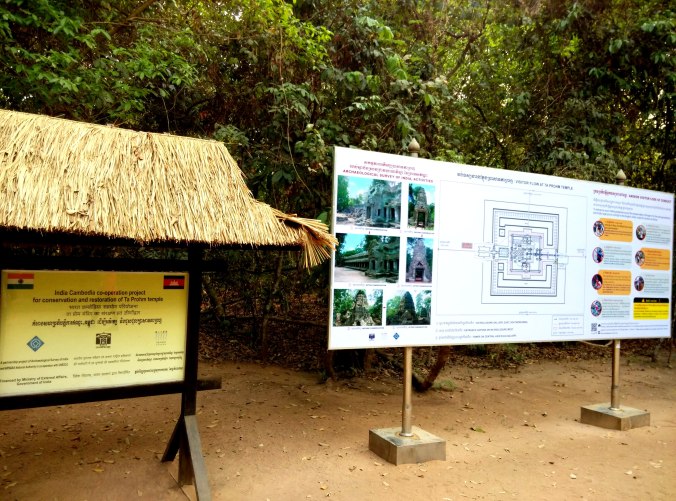
Ta Prohm though made famous by the Angelina Jolie starer movie, remains a favourite among many for its beauty, the trees grow entwined with the walls of the temple.
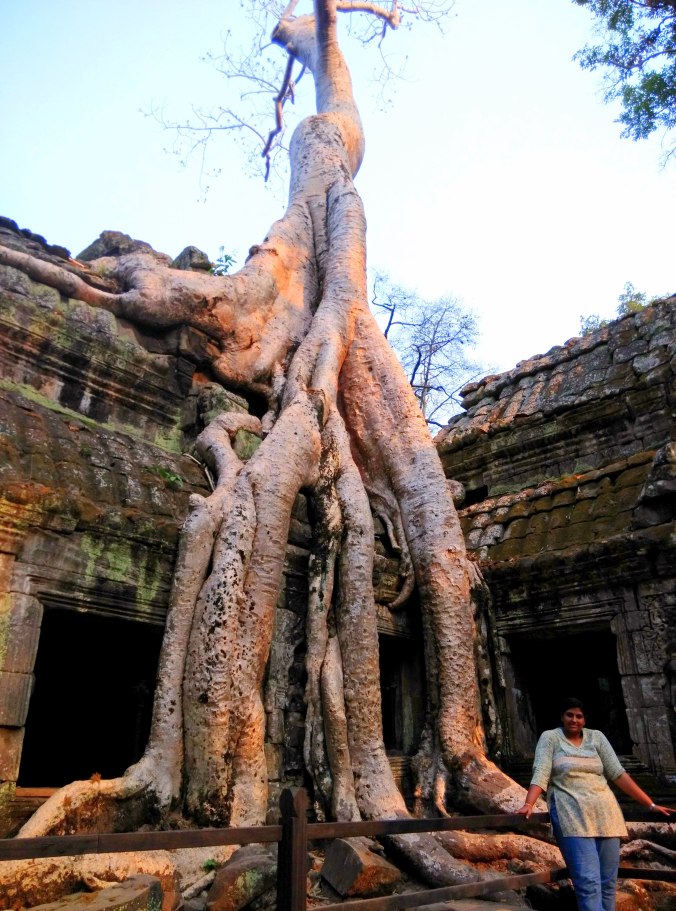
The interesting History (!): In 1186 A.D., Jayavarman VII embarked on a massive program of construction and public works. Rajavihara (“monastery of the king”), today known as Ta Prohm (“ancestor Brahma”), was one of the first temples founded pursuant to that program. The stele commemorating the foundation gives a date of 1186 A.D
Jayavarman VII constructed Rajavihara in honour of his family. The temple’s main image, representing Prajnaparamita, the personification of wisdom, was modelled on the king’s mother. The northern and southern satellite temples in the third enclosure were dedicated to the king’s guru, Jayamangalartha, and his elder brother respectively.
The temple’s stele records that the site was home to more than 12,500 people (including 18 high priests and 615 dancers), with an additional 800,000 souls in the surrounding villages working to provide services and supplies. The stele also notes that the temple amassed considerable riches, including gold, pearls and silks. Expansions and additions to Ta Prohm continued as late as the rule of Srindravarman at the end of the 15th century.
We ended the tour with the sunset at Phnom Bakheng. The mountain temple of Hindhus and Buddhists.There are lot many many monuments in and around Angkor for which just a day or a post wouldn’t do justice.
Few Clicks of the people in Angkor
P.S: I have tried my best to give a glimpse of the beauty of the Angkor and I hope you did enjoy it. I do wish I had a DSLR to take even more captivating pictures. But the rich history shall always be etched in the curious part of my brain and would read on!
On my trip to Malaysia, click here.
On my night at the party Street- the Khao San Road, click here.
Soon to follow: On my destinations Vietnam, Cambodia and Thailand.











The details in the carvings are amazing.
LikeLiked by 1 person
Thankyou 🙂
LikeLike
Angkor is one of the places I need to see in my lifetime. Your photos are wonderful!
Good luck with this year’s challenge.
LikeLiked by 1 person
Thankyou Elizabeth! 🙂 I am sure you will have an amazing time at the Angkor!
LikeLiked by 1 person
Pingback: The Plan: Backpacking through 4 Countries in 11 Days! | Wannabe Humane
Pingback: The Plan: Backpacking through 4 Countries in 11 Days! | Wannabe Humane
Pingback: Malaysia :4C11D Trip | Wannabe Humane
Pingback: Must do’s and don’ts in Khao San Road, Bangkok, Thailand | Wannabe Humane
Pingback: No Theme | Wannabe Humane